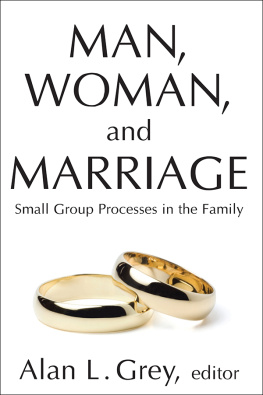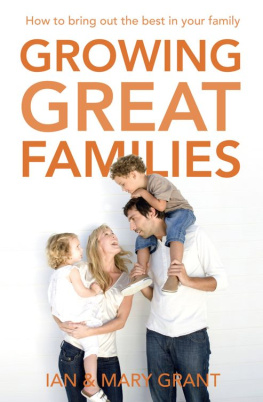Originally published in 1959 by University of Chicago Press.
Published 2016 by Transaction Publishers
Published 2017 by Routledge
2 Park Square, Milton Park, Abingdon, Oxon OX14 4RN
711 Third Avenue, New York, NY 10017, USA
Routledge is an imprint of the Taylor & Francis Group, an informa business
New material this edition copyright 2016 by Taylor & Francis.
Copyright 1959 by Gerald Handel.
Preface copyright 1974 by the University of Chicago.
Foreword copyright 1996 by The Haworth Press, Inc.
All rights reserved. No part of this book may be reprinted or reproduced or utilised in any form or by any electronic, mechanical, or other means, now known or hereafter invented, including photocopying and recording, or in any information storage or retrieval system, without permission in writing from the publishers.
Notice:
Product or corporate names may be trademarks or registered trademarks, and are used only for identification and explanation without intent to infringe.
Library of Congress Catalog Number: 2016022606
Library of Congress Cataloging-in-Publication Data
Names: Hess, Robert D., author. | Handel, Gerald, author.
Title: Family worlds : a psychosocial approach to family life / Robert D.
Hess and Gerald Handel.
Description: New Brunswick (U.S.A.) : Transaction Publishers, 2016. |
Includes index.
Identifiers: LCCN 2016022606| ISBN 9781412863162 | ISBN
9781412863551 (ebook)
Subjects: LCSH: Families--United States.
Classification: LCC HQ535 .H47 2016 | DDC 306.850973--dc23
LC record available at https://lccn.loc.gov/2016022606
ISBN 13: 978-1-4128-6316-2 (pbk)
Foreword
Family Worlds and Qualitative Family Research: Emergence and Prospects of Whole-Family Methodology
Gerald Handel
Family Worlds, by Robert D. Hess and Gerald Handel, made distinctive contributions to the methodology of family studies and to theoretical understanding of family relationships and interaction. The purpose of this paper is to summarize those contributions, to describe the background from which the work arose, and to suggest some current implications. The book was published by The University of Chicago Press in 1959 and in a paperback edition with a new preface in 1974. It was in print for 30 years and sold a total of 10,535 copies. That is not a sensational sales figure but it is a respectable number of copies for a scholarly book. Its longevity is more noteworthy, and perhaps has not yet ended. In 1992, although the publisher had no copies left to sell, a royalty was paid; a Kinko copy center had paid a fee to reproduce the entire book. In May 1995, University Press of America reissued the paperback edition.
These nitty-gritty details testify, in a somewhat objective way, that Family Worlds had something to say that was of more than transitory interest; an invitation from the Speech Communication Association to speak about the work at its 1994 Annual Meeting is an additional affirmation, as is the opportunity to publish the discussion in this volume. I welcome these opportunities because I believe that the books contributions are not obsolete despite the considerable changes that have taken place in the family institution in the 35 years since publication. Further, since the book includes five detailed family case studies, the book now acquires an added value as a contribution to the documentary history of American family life.
Let me first briefly summarize the books contents. Then I will turn to a discussion of how the work was done and will conclude with brief comments regarding its main contributions and implications.
A Summary of Family Worlds
One of the two readers of the book manuscript for the publisher was Reuben Hill, a leading family sociologist. An excerpt from his review was quoted on the dust jacket: [Family Worlds] breaks new ground in the social psychology of the family. That is a good concise statement of what the book is about. I recall that when we were doing the work I asked W. Lloyd Warner, a senior colleague, what we should call the kind of work that Hess and I were doing. Was it social psychology? Thats what it seemed to me, but I had never read anything called social psychology of the family nor even heard or seen the expression until Reuben Hills comment confirmed my notion. For what we were trying to do was to understand, describe, and analyze how families function. The opening chapter of the book presents the rudiments of a new theory of how families operate, how they construct and constitute the worlds they make for themselves. We understood full well that families are shaped by the society in which they live, but that was not our focus. Our focus was at the microsocial level of family relationships and interaction. Our opening sentence takes cognizance that families operate in a wider social context, but we wanted to analyze not the context but the construction of family life within it.
We had no precedents, no models for the work we were doing. The field of family therapy did not exist; it was just starting up at about the same time. Departments of family studies, fairly widespread today, were not even on the horizon, nor was there at that time a concept of family communication. Sociologists studied problems such as divorce and family breakup, but their major interest was on the ways in which family structure reflects the broader social structure and on how it changes as social structure changes. Psychologists did a little work on mother-child relationships, but it was not a major interest; indeed, it is only in the last few years that they even mention families in other than therapeutic contexts.
We studied 33 two-parent families of northwest European ancestry. Each family had either two or three children between the ages of 6 and 18. Each member of the family was interviewed at least once. In addition, each member told stories to Thematic Apperception Test (TAT) pictures and completed incomplete sentences. Each parent wrote a paragraph on the topic The kind of person I would like my child to be. Each child wrote or spoke a few sentences on the topic The person I would like to be like.
The first chapter of Family Worlds is based on the analysis of all this material. It formulates five processes of family functioning. The first and most general is that every family must work out a pattern of separateness and connectedness. We take as fundamental that every person is both connected to the other family members and is also a separate individual. We do not assume that families necessarily achieve a pattern that is enduring or that satisfies all the members, but rather that patterns are provisionally established while the process is a basic one that is ongoing.
The second process we called the familys effort to establish a satisfactory congruence of images through the exchange of suitable testimony. We argue that each member of a family develops an image of what each other member of the family is like, as well as a self-image and an image of himself or herself in relation to each of the others. Ones image of a person defines that person for oneself as an object of ones own actions. The members of a family are likely to have somewhat varying images of any given member whose own self-image may also diverge from any or all of the images held by the others. By word and deed, family members try to establish a satisfactory congruence of images among themselves, a process that is not, as we know, always successful.






